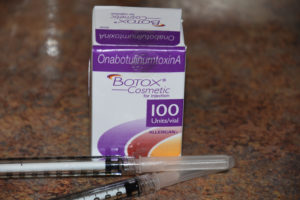
With such treatment popularity, competition is inevitable (which is good) but imitators may also emerge. (which for a drug can be very bad) Known as ‘Black Market Botox’ drugs that appears as the real Botox or try to be passed off as such have been known to occur. The FDA reports today that such compounds have been found in the U.S. and may be being used in some doctor’s office and clinics. This occurs when an unlicensed supplier who is not permitted by FDA regulations to ship or distribute products into the U.S. does so. Offering seemingly similar effectiveness but at lower prices is the inducement for physicians to purchase and use it. Patients would have no idea that an unlicensed drug may be given to them during their treatments.
Since these compounds have not been manufactured according to FDA standards, there is no assurance that they are safe or effective. How can one tell if their ‘Botox’ is real? For physicians it can be determined by the packaging and the actual vial that contains the compound. On real Botox as manufactured by Allergan the active ingredient known as onabotulinum toxin A is listed on the outer carton as well as on the glass bottle. With the fake compound, the active ingredient is listed as botulinum toxin type A is listed on the outer carton and glass bottle. Also on the fake product the glass bottle may be missing any lot numbers.
For patients determining that they be given a counterfeit product may be impossible to tell. Very low advertised prices per unit or extraordinary specials may be a clue. Injections done in non-medical settings by dubiously qualified injectors may be another tip off. Any change in the effectiveness of one’s ‘traditional’ Botox treatment may also raise some suspicion.
Dr. Barry Eppley
Indianapolis, Indiana


